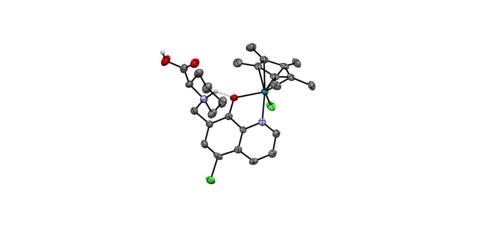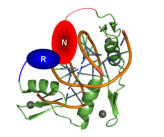


University of Szeged, Faculty of Science and Informatics,
Bioinorganic Chemistry Research Group
H-6720 Szeged, Dóm tér 7-8. Tel.: (+36-)62-54-4334
Last updates: 2025.01.30.

Welcome to the hompage of Bioinorganic Chemistry Research Group
Biocoordination
chemistry
researches
were
initiated
at
the
Department
by
Professor
Kálmán
Burger
Member
of
the
Hungarian
Academy
of
Sciences
in
1983.
This
year
he
arrived
from
the
Eötvös
Loránd
University,
Budapest
and
was
appointed
to
the
Head
of
the
Department
of
Inorganic
and
Analytical
Chemistry
at
the
József
Attila
University,
Szeged.
In
parallel
with
this,
from
the
Reaction
Kinetics
Research
Group
of
the
Hungarian
Academy
of
Sciences
a
new
academy
research
group
separated
and
the
Biocoordination
Chemistry
Research
Group
of
the
Hungarian
Academy
of
Sciences
was
created
with
him
as
the
leader
of
the
Group.
The
main
profile
of
the
Group
was
studying
the
interactions
of
low
and
high
molecular
mass
biomolecules
with
potential
biological
activity
with
essential
metal
ions
in
order
to
achieve
positive
physiological
effects
to
make
molecules
which
can
have
medicinal
applications.
Probably
the
most
remarkable
result
of
this
work
was
the
preparation
of
a
Zn(II)-hyluronate
complex
with
wound-healing
activity,
in
collaboration
with
the
Richter
Gedeon
Pharmaceutical
Works,
Budapest,
which
was
introduced
in
the
medicinal
practice
in
the
name
of
Curiosa
in
1998.
Since
1983
about
half
of
the
academic
staff
of
the
Department
plus
the
full
staff
of
the
Academy
Research
Group
works
in
the
field
of
biocoordination
chemistry.
From
the
beginning
the
Group
had
increasing
international
collaboration
links
with
European,
Asian
and
overseas
universities.
Meanwhile
the
Head
of
the
Department
changed
in
1996,
when
Professor
Tamás
Kiss,
who
arrived
from
the
Kossuth
Lajos
University,
Debrecen
was
appointed
to
this
position.
As
he
had
been
working
in
the
same
field,
these
researches
continued
with
unchanged
activity
and
success.
He
became
the
head
of
the
Academy
Research
group
also
from
1999.
During
the
years
the
research
activity
of
the
group
moved
more
and
more
to
the
investigation
metal
complexes
with
potential
medicinal
application.
The
aim
of
the
studies
were
to
explore
the
transformations
of
these
molecules
occurring
in
the
biological
systems
in
fluids
or
in
the
cells.
We
want
to
know
as
much
as
possible
about
their
interactions
with
the
endogenous
and
exogenous
molecules
present
in
biological
systems.
From
model
systems
we
moved
more
and
more
to
real
systems.
Our
investigations
include
among
others
anticancer
and
antidiabetic
metal
complexes,
compounds
for
metal
targeted
therapy
in
neurodegenerative
diseases.
We
are
involved
in
work
for
elaboration
of
artificial
enzymes.
Based
on
the
structural
and
functional
modelling
of
metal
containing
metalloproteins
and
metalloenzymes
we
want
to
get
mechanistic
information
about
various
hydrolytic
and
redox
enzymes.
The
final
aim
is
the
elaboration
of
biomimetic
catalysts
with
catalytic
efficacy
close
to
enzymes.
Our
researches
can
serve
also
the
therapy
of
various
genetic
diseases
through
the
correction
of
genetic
errors
using
e.g.
artificial
metallonucleases.
In
addition,
we
try
to
develop
techniques
to
use
bacteria
producing
toxic
metal
ion
binding
proteins
in
order
to
remove
toxic
metal
ions
from
waste
waters
in
an
efficient
way.
All
these
changes
in
the
scope
of
our
researches
gave
motivation
to
emphasize
the
bioinorganic
chemistry
aspects
of
the
works
in
the
name
of
group
too,
and
thus
now
the
official
name
was
changed
to
Bioinorganic
Chemistry
Research
Group.
The
directions
of
our
current
research
projects
are
largely
determined
by
our
participation
in
the
“Intelligent
Metallic
Compounds”
(GINOP
-2.3.2-15-2016-00038
)
project
under
the
Economic
and
Innovation
Operative
Program
of
the
Hungarian
government
funded
by
the
European
Union.
This
research
group
has
the
highest
number
of
participants
in
the
department.
The
head
of
the group was Tamás Gajda from 2018 until 2022, now Éva Anna Enyedy.
Éva Anna Enyedy
Head of the Research Group

Admins: Máté Levente Kis









